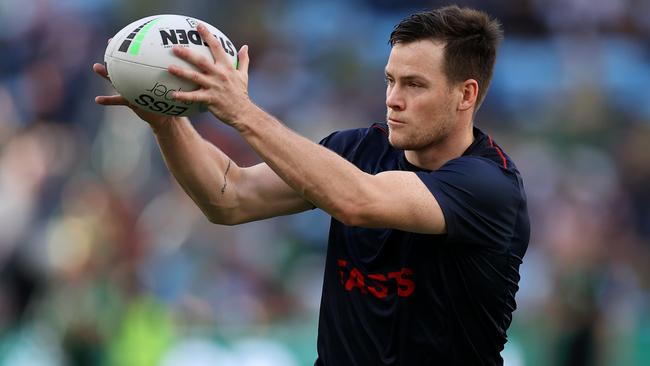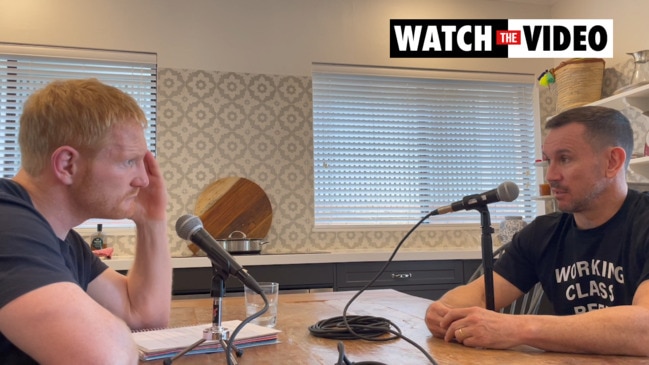Top doctor backs Keary’s call for NRL action
Dr Michael Buckland backed in Roosters star call for reduced contacting in training.

Michael Buckland says Australian sporting codes such as the NRL and AFL are lagging behind on concussion protocols and says they must limit full contact training.
The brain doctor’s call follows Sydney Rooster star Luke Keary – who has a history of head knocks – telling The Australian that contact must be reduced in NRL training sessions and said the code was “behind” in not enacting a policy.
Buckland, who heads Australian Sports Brain Bank, says the NRL and AFL should follow the lead of the NFL in the US from a decade ago and limit contact training to one session a week. “It is ridiculous and they are definitely behind. The NFL limits full contact training, we know it is the cumulative hits that are the problem,” Buckland told The Australian. “If you reduce full contact training, you halve your exposure over your lifetime and that’s a huge reduction in CTE risk.”
Chronic traumatic encephalopathy (CTE) is a progressive brain condition that has been linked to repetitive blows to the head and concussion.
The Australian Sports Brain Bank, led by Buckland, is currently examining the brain of the late NRL player Paul Green.
Green’s brain was donated to science by his family after the celebrated Cowboys premiership coach and former rugby league player took his own life.
Buckland also threw his support behind NRL great James Graham’s idea of an annual brain, body and mind check-up for retired athletes.
“We know there are multiple factors that go into brain health. What’s done is done, but there are still a lot of modifiable factors – having your blood pressure and sugars are under control, managing pain, getting good sleep, reducing alcohol intake, keeping socially and intellectually engaged,” Buckland said.
“Yes, I back in (a check-up) something that backs in those modifiable factors.”
Buckland said the Australian Sports Brain Bank did not have a relationship with the NRL or AFL but was hopeful it could establish one in the future.
“Codes don’t want to speak to us at the moment despite the serious nature of the topic,” he said. “And while they spruik their concussion management, good concussion management is important but we have no evidence that risk of CTE is reduced in the long term.
“What drives CTE is cumulative exposure – that’s the number of years and games you play. To reduce full contact training, banning tackling until at least high school age is the way the codes should go.

“We know the age of first exposure for contact sports predicts neurobehavioural issues as well as structural changes to the brain on imaging.”
In the latest episode of The Australian’s chart-topping sports investigation Head Noise, Graham takes listeners inside the bone-crunching rugby league collisions and details its extraordinary consequences.
The episode also delves into the debate around the brain disease CTE. It’s an issue that has caused division. Some have argued that the evidence linking the repetitive knocks is not adequate enough to prove a definitive link.
But a paper led by Buckland and released last month said his team had found “conclusive evidence” that CTE could be caused by repetitive head impacts such as tackling and ball heading.
One of the experts who co-wrote this paper is Chris Nowinski, a former college football player, WWE professional wrestler and now neuroscientist.
The Australian spoke to him about this research paper. He’s also the co-founder of the Concussion Legacy Foundation, which supports former American football players affected by concussion and CTE.
“When you put the evidence through this framework, it’s black and white, that even a child could understand that not only is causation been proven beyond a reasonable doubt, but there’s no other hypothesis for why this is happening. And that’s really important and people will listen to. There is no other variable that’s been identified, that can be causing what we’re seeing.”
The experts are calling for repetitive head impacts in children to be treated like exposure to lead, mercury, smoking and sunburn. These researchers – from nine academic institutions in six countries, including University of Melbourne and University of Sydney – collated independent CTE studies from across different sports around the world.
Previous studies have observed an association between contact sports and CTE, but stopped short of saying that one caused the other.


